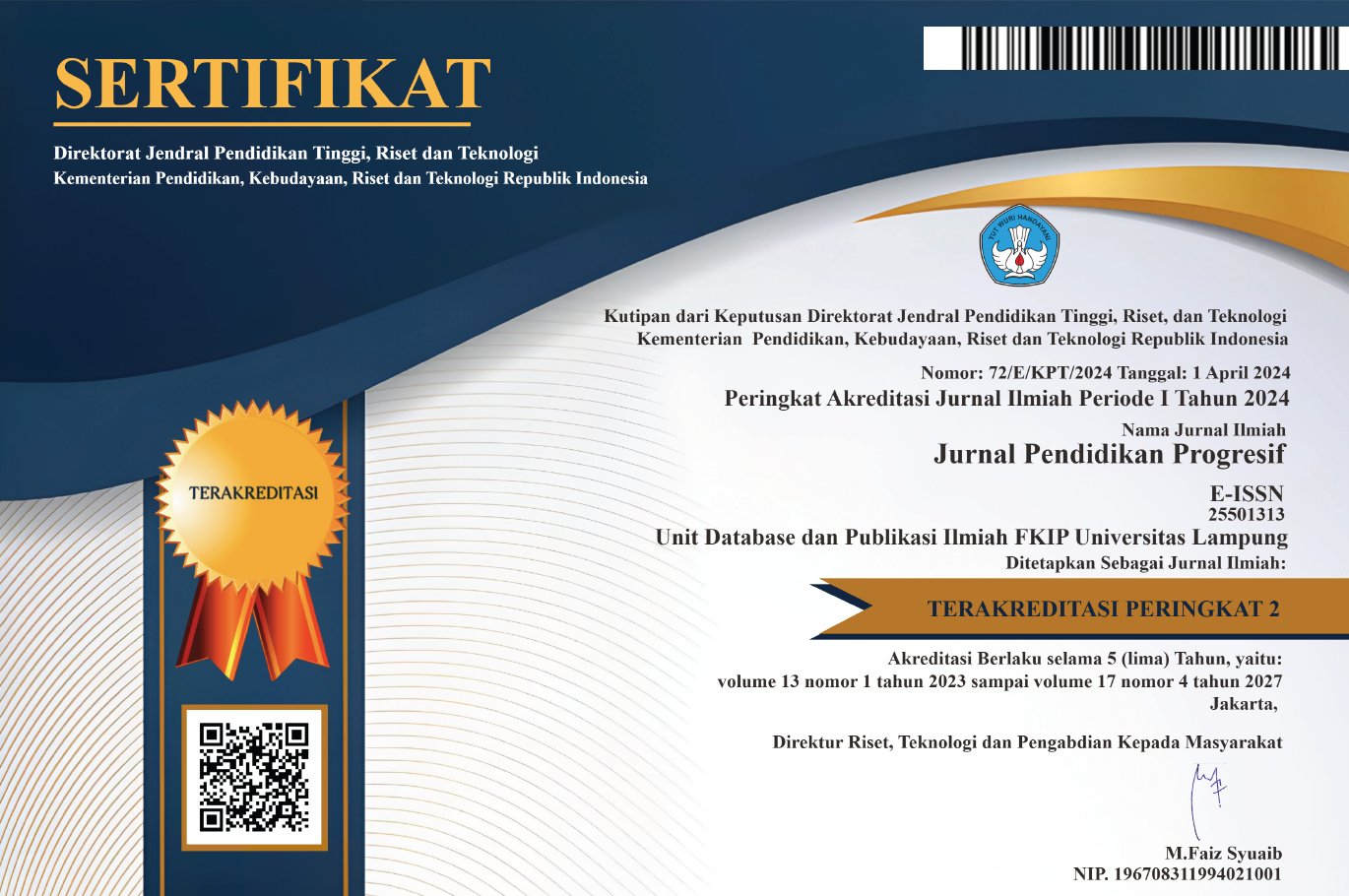How to Build Mathematical Abilities in Deaf Students? A Grounded Theory
Copyright (c) 2025 Samuel Igo Leton
| Article Metrics→ |
Abstract
How to Build Mathematical Abilities in Deaf Students? A Grounded Theory. Objective: This study aims to produce a conceptual model as a strategy for building mathematical abilities in deaf students. Methods: This is qualitative research with a grounded theory design involving 45 deaf students from four middle schools in Indonesia. Findings: The results of the data analysis at the open coding stage obtained five categories of visual, feeling, understanding, learning experience, and habits in learning mathematics. At the axial coding stage, mathematical understanding was used as the core category. While at the selective coding stage, a conceptual model was built where each category contributes to building mathematical abilities. Conclusion: That efforts are crucial to develop the mathematical abilities of deaf students comprehensively. This can be done by visualizing the problems, connecting the problems with the student environment, providing learning experiences with various questions, giving motivation, and increasing self-confidence using praise and more attention from parents or teachers.
Keywords: deaf student, grounded theory, mathematical abilities.
DOI: http://dx.doi.org/10.23960/jpp.v12.i2.202240
References
Akram, B., Mehboob, R., Ajaz, A., & Bashir, R. (2013). Scientific concepts of hearing and deaf students of grade VIII. Journal of Elementary Education, 23(1), 1-12.
Barbosa, H. H. (2013). Habilidades matemáticas iniciais em crianças surdas e ouvintes. Cadernos CEDES, 33(91), 333–347.
Barros, R., Nunes, T., Evans, D., & Burman, D. (2014). Improving deaf children’s working memory through training. International Journal of Speech & Language Pathology and Audiology, 2(2), 51–66.
Borgna, G., Walton, D., Convertino, C., Marschark, M., & Trussell, J. (2018). Numerical and real-world estimation abilities of deaf and hearing college students. Deafness and Education International, 20(2), 59–79.
Bull, R., Marschark, M., Sapere, P., Davidson, W. A., Murphy, D., & Nordmann, E. (2011). Numerical estimation in deaf and hearing adults. Learning and Individual Differences, 21(4), 453–457.
Ekawati, R., Lin, F. L., & Yang, K. L. (2015). Developing an instrument for measuring teachers’ mathematics content knowledge on ratio and proportion: A case of Indonesian primary. International Journal of Science and Mathematics Education.
Hao, J., & Wu, C. (2019). Deaf children’s moral behavior, moral reasoning and emotion attribution. Journal of Deaf Studies and Deaf Education, 24(2), 95–103.
Lang, H. G., & Steely, D. (2003). Web-based Science Instruction for Deaf Students: What Research Says to the Teacher. Instructional Science, 31(4–5), 277–298.
Leton, S., Wahyudin, W., & Darhim, D. (2019). The ability of deaf student in solving mathematics problem. International Conference on Science and Technology for an Internet of Things, 2-8, 20 October 2018, Yogyakarta, Indonesia.
Leton, S.I. (2018). Kemampuan Koneksi dan Pemecahan Masalah Matematis Serta Kegemaran Belajar Matematika Siswa Tunarungu Kelas VIII. Disertasi. Universitas Pendidikan Indonesi. 1502243.[Eighth Grade Deaf Students' Ability On Mathematical Connection And Problem-Solving And Passion For Math Learning]. Dissertation
Leton, Samuel Igo, Lakapu, M., & Dosinaeng, W. B. N. (2019). Mathematical problem-solving abilities of deaf student in solving non-routine problems. Math Didactic: Jurnal Pendidikan Matematika.5(2), 157-167
Marlatt, E. (2014). The importance of visual stimulus as a component of audition stimulus in the aural/oral (re)habilitation of children/clients with hearing loss. American Annals of the Deaf, 159(4), 317–318.
Marschark, M., Paivio, A., Spencer, L. J., Durkin, A., Borgna, G., Convertino, C., & Machmer, E. (2017). Don’t assume deaf students are visual lLearners. Journal of Developmental and Physical Disabilities.
Nikolaraizi, M., Vekiri, I., & Easterbrooks, S. R. (2013). Investigating deaf students’ use of visual multimedia resources in reading comprehension. American Annals of the Deaf, 157(5), 458–473.
Nunes, T. (2002). An Intervention Program for Promoting Deaf Pupils’ Achievement in Mathematics. Journal of Deaf Studies and Deaf Education, 7(2), 120–133.
Pagliaro, C. M. (2012). Mathematics Reform in the Education of Deaf and Hard of Hearing Students. American Annals of the Deaf, 143(1), 22–28.
Pagliaro, C. M., & Ansell, E. (2012). Deaf and hard of hearing students’ problem-solving strategies with signed arithmetic story problems. American Annals of the Deaf, 156(5), 438–458.
Stylianides, A. J., & Stylianides, G. J. (2007). Learning mathematics with understanding: A critical consideration of the learning principle in the principles and standards for school mathematics. The Montana Mathematics Enthusiast, 4(1), 103–114.
Suharsimi Arikunto. (1993). Prosedur Penelitian: Suatu Pendekatan Penelitian. Rineka Cipta. [Research Procedure: A Research Approach]
Van der Sandt, S. (2018). A case study: Teachers’ confidence in theirown and their students’ abilities in deaf/hard of hearing high school mathematics classrooms. Issues in the Undergraduate Mathematics Preparation of School Teachers, 5(August), 1–15. https://eric.ed.gov/?id=EJ1189601
Vosganoff, D., Paatsch, L. E., & Toe, D. M. (2011). The mathematical and science skills of students who are deaf or hard of hearing educated in inclusive settings. Deafness and Education International, 13(2), 70–88.
Zevenbergen, R., Hyde, M., & Power, D. (2001). Language, Arithmetic Word Problems, and Deaf Students: Linguistic Strategies used to Solve Tasks. Mathematics Education Research Journal, 13(3), 204–218.
Refbacks
- There are currently no refbacks.

This work is licensed under a Creative Commons Attribution-ShareAlike 4.0 International License.
View My Stats


